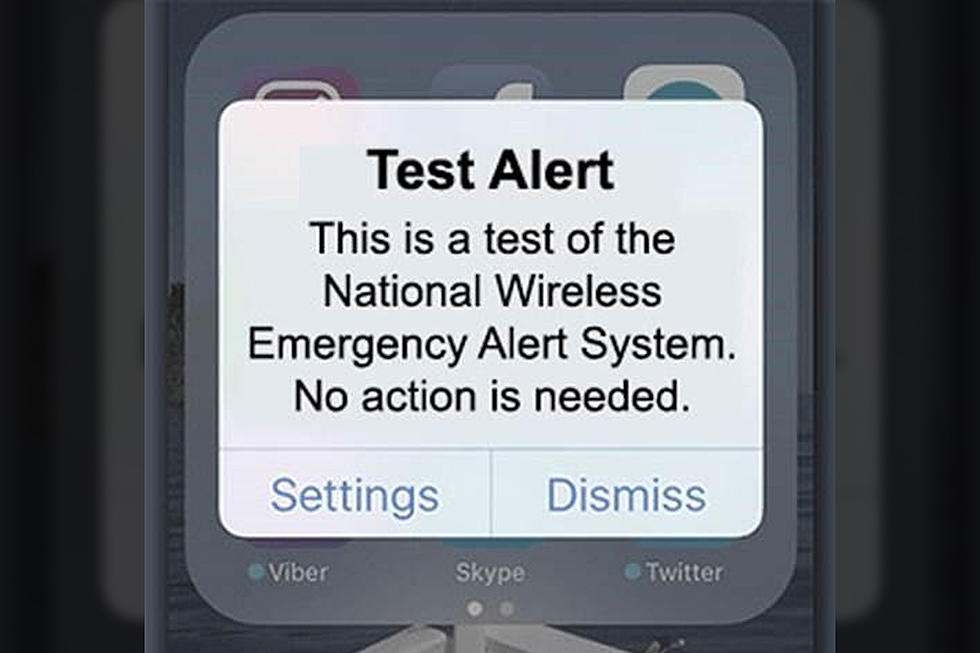
Only A Test: Your Phone Is Going To Go Off Wednesday Afternoon As Part Of A Nationwide Alert Test
There's a pretty good chance your phone is going to go off with an alert at 1:20 pm this afternoon.
The folks at the Federal Emergency Management Agency (FEMA) and the FCC are planning a coordinated nationwide alert test across devices on Wednesday afternoon that will include broadcast radio and television, cable TV, and cell phones.
You've likely seen/heard traditional radio and TV alerts and tests several times over the years. Those attention-getting tones, usually followed by important weather information or a phrase normally along the lines "this is a test of the Emergency Alert System".
That system, referred to by many as EAS, regularly gets tested on a local and state level a number of times through the year. Once a year, there is a nation-wide test of this alert system, which can also be used in the event of civil alert emergencies that include weather, other natural disasters, or other regional or national emergencies.

In recent years, the FCC has worked with cell phone manufacturers and service providers to include the ability to receive the same type of emergency alerts in the event of a local or national emergency. This system is referred to as the Wireless Emergency Alert system, or WEA.
Users have the ability to turn this feature on and off, giving each person the ability to subscribe to AMBER Alerts, emergency alerts, and public safety alerts for your area within the settings on your phone. I'll explain how to do that in a bit.
The test of both the radio and TV broadcast EAS and mobile phone WEA is scheduled for 1:20 pm central this afternoon (Wednesday, August 11). If you have a TV or radio on, or if you have these alerts on your phone turned on, you'll hear an audible tone and receive the test message. That alert looks something like this on your phone:
If you want to adjust the settings for these alerts on your phone, here's how to do it:
On an iPhone
- Tap into the "settings" icon on your phone
- Tap on the "notifications" option
- Scroll to the bottom of the page, where you will see an area labeled "Government Alerts". Here, you can toggle on/off AMBER Alerts, emergency alerts, and public safety alerts separately
On an Android phone
This might vary a little more based on your phone, carrier, or software version, but it should go something like this:
- Tap into "settings" on your phone
- Select "apps & notifications"
- Tap into the "advanced" area and select "Wireless emergency alerts"
- Toggle on/off "allow alerts"
- Once you've toggled these on, you can turn on individual alert types. This includes categories extreme threats, severe threats, AMBER Alerts, public safety messages, and state and local tests




